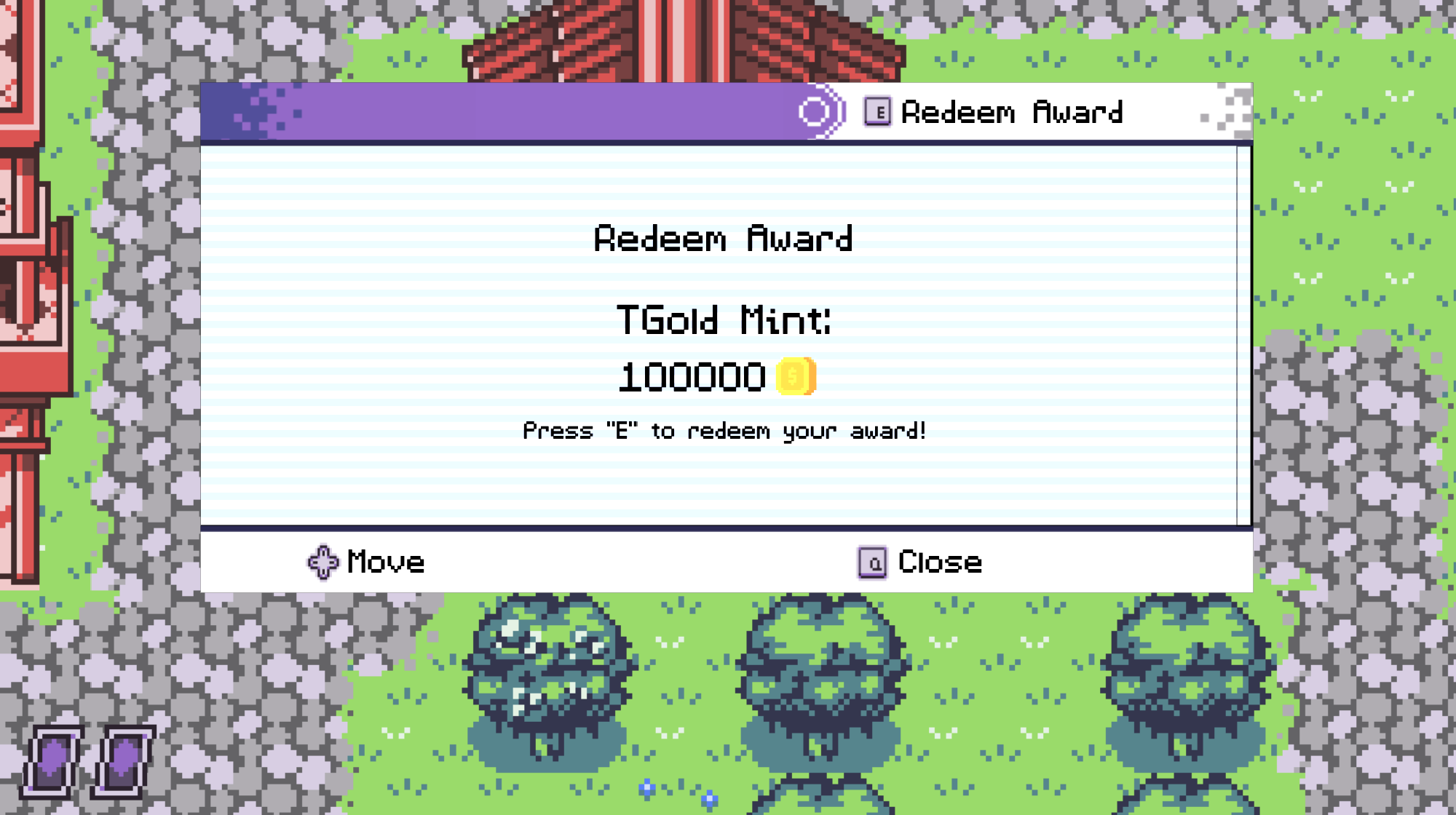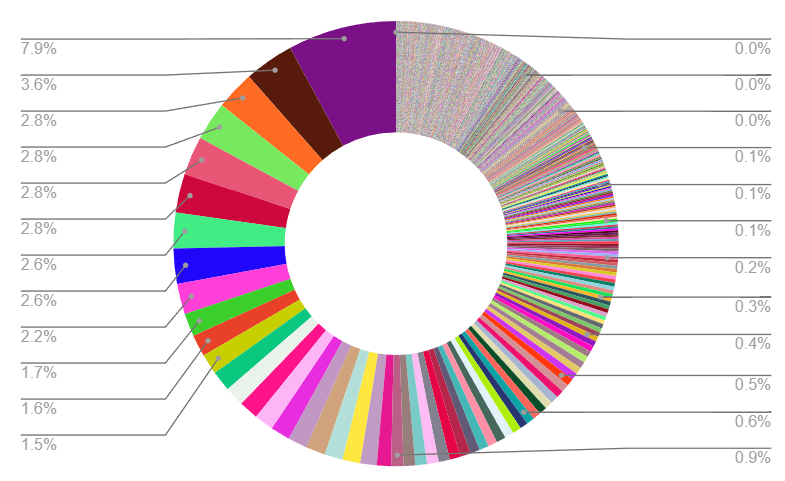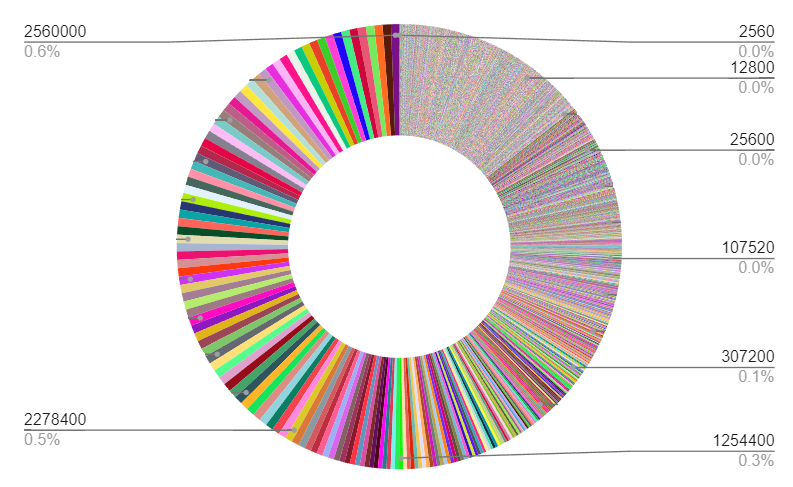
5 days ago, the mint for our latest game Tarochi (a decentralized RPG game) ended with a massive success, not only selling out of the 10K Genesis Trainer collection, but also ending with over 35,000 free mints for the Season 1 pass and over $350,000 TGOLD minted (TGOLD being the game currency that exists as an onchain token).
Today, as we distribute TGOLD to everyone, let's talk about the mint and the future of TGOLD.
How to redeem
To claim your TGOLD, open the game, connect your wallet (Tab > Connect Wallet) and accept the redeem prompt.
Tarochi architecture
To make sure we're on the same page, let's dive deeper into what TGOLD is. TGOLD is the token for the autonomous world of Tarochi used for a growing number of actions in the world, such as to purchase items at the shop. TGOLD lives onchain, but acts as the token for the Tarochi L4. So what is this L4?
- L1: Ethereum
- L2: Arbitrum
- L3: Xai
- L4: Tarochi

This architecture is what has allowed Tarochi to scale up to over 1 million transactions in less than 100hrs since launch. Transactions are cheap enough that our team can cover the tx fees of everybody who plays, and fast enough for the game to feel responsive. Additionally, similar to how many projects use Ethereum+Celestia these days to take advantage of two different layers at the same time, Tarochi monitors Arbitrum+Xai+Cardano at once. This allows taking advantage of the low cost & fast speed of Xai while leveraging chains with larger liquidity for tokens and NFTs. You can learn more about this architecture here.
Additionally, Tarochi is a non-EVM application. This is what has allowed us to make Tarochi a complex and dynamic world while maintaining decentralization. Although there are currently many more tools for EVM than Paima Engine (the stack used to build the Tarochi L4), Tarochi can connect directly to other layers like Arbitrum to avoid the impact of this setup.
Understanding this architecture should now help understand how TGOLD works: TGOLD facilitates the economy of the Tarochi L4 and acts at the primary token for that network. To allow users to buy & sell TGOLD openly, we will be building a DEX on Arbitrum One where trades made on that network get reflected directly in Tarochi (without a bridge - in the same way L2s posting data to Celesita do not necessarily need a Celestia -> Ethereum bridge to function). Although it means anybody can buy & sell TGOLD on the open market on Arbitrum, it does mean that TGOLD cannot live in AMM DEXs like Uniswap because Uniswap is not aware of this Tarochi L4 connection. On a side note, trading monsters on the open market will work in a similar way.
With all the architecture required for Tarochi, naturally there is a question of who runs all this architecture. Currently, Paima Studios is running this architecture for free, but anybody else can operate their own node (Tarochi is a decentralized game and Paima Studios has no "admin" key or any special privileged position in the ecosystem). To tackle this, we do plan to release a Paima Ecosystem Token which will be a standard ERC20 token living in Arbitrum. Its position, unlike TGOLD, living directly in Arbitrum makes it accessible from all games deployed using Paima Engine (including Tarochi) and natively usable with other dApps like Uniswap.
That is to say,
- TGOLD is a means of exchange. It powers the economy of the Tarochi autonomous world.
- Paima Ecosystem Token is an ecosystem token. It powers the architecture across all games and apps built with Paima Engine.
TGOLD vs ERC20 Tokens
TGOLD has a very different tokenomics from standard tokens. There is no team allocation, no VC allocation, and no allocation to any other special group. The entire supply was 100% distributed to the community through a mint. Instead, our team makes money through client fees: that is to say we receive a portion of TGOLD spent on in-game actions through our Tarochi client. However, since Tarochi is a decentralized protocol, anybody else can build their own Tarochi client that has a different user experience and charges their own fee (or even provides services for free if they want).
We believe operating in this way is better because:
- It gives much better alignment between us and the community. Our team is aligned to make the game, the client and the economy better because that's how we finance the continued development of the game beyond the initial mint.
- It has better decentralization. We didn't allocate any of the supply to us, vcs, investors, or anybody else. It entirely allocated to just the community for a game that is decentralized on day 1.
On top of the architecture of the game and the tokenomics, TGOLD also has an unbound supply during the mint period and all the functionality described in the tokenomics revolved around features either available on launch, or available within 1~2 months after launch. This makes TGOLD very different from standard tokens, and this was on purpose - we did not want TGOLD to feel like an investment into a long roadmap, but rather feel like you're buying a token that will be useful in your adventure both in the autonomous world of Tarochi and as a member of the community. To drive this point further, we made the suggested TGOLD amount in the mint $5 USD, and the plus button in the UI to add more TGOLD to your order added TGOLD in increments of $1.
We believe our UI and tokenomics conveyed this point very well, and out of the over 6000 addresses that minted TGOLD, over 5000 of them only bought $10 of TGOLD total with 60% having bought exactly $5. However, some addresses, presumably by sending to the contract directly instead of through our UI, sent up to $30,000 USD to mint TGOLD even though this is far above the recommended amount.
Despite this, the distribution still ends up looking very healthy compared to most crypto projects.

However, given the architecture and goal of TGOLD, our team feels probably those who minted such large amounts of TGOLD did so thinking that TGOLD more like an ERC20 token (fixed rules that never change, lives natively on Arbitrum for maximum composability, etc.) and perhaps would be more interested in the Paima Ecosystem Token when it is released (which checks those boxes) as opposed to TGOLD.
Capping the mint
Given these differences and the unexpectedly large individual mints of TGOLD (by people who sent directly to the contract instead of through our website), we've decided to refund any amount above $1000 minted by a given user, with these refunds arriving in your wallet over the next few days.
Your show of financial support to our team is massively appreciated ❤, but we would rather refund you and play it safe than take your money and have you later be upset if TGOLD is not what you expected it to be. Instead, we will offer you the following:
- You will be whitelisted into the Paima Ecosystem Token sale when it happens. If you like what our team does and want to continue your support, you will be able to make an independent financial decision at that time.
- We will reward you with something special in game. We'll try to think of something meaningful that doesn't feel unfair to those who contributed large amounts but not quite $1000.
This results in the new distribution, which looks a lot more in-line with what we expected.

What about Sybil Attacks?
One typical concern with capping the per-address contribution like this typically is that it may benefit sybil attackers (people who create multiple wallets all controlled by the same person to gain benefits). If somebody who placed many small orders of $5 worth of TGOLD now ends up having a disproportionate benefit, this would not be fair to everyone.
After analyzing the mint results, we believe this is not a major concern. The reason is that only around 10,000 transactions for TGOLD were done in general (by 6000 unique addresses). If somebody made many small transactions (say, 100 transactions of $10 each), they would represent a non-trivial subset of the total transaction (1% in this case just to get to $1000 through 100 txs for a single sybil attacker) and so we would expect addresses within a given range (ex: $10 ~ $20) to look different from addresses that did not sybil attack (those who put a lot of money into the mint).
However, we don't see this difference by looking at some key facts such as:
- The percentage of addresses who have an ens domain is consistently around 12~14% across different mint ranges
- The number of transactions in an address. Across all ranges, the number of transactions in an address seems to follow roughly the same distribution (no clumps of addresses with only 1~2 txs in any range group)
- The number of day 1 players we had on launch day was comparable to the number of minters
Although it is possible we missed something, the combination of the fact there was no reason for anybody to want to sybil attack the mint (there was no clear financial benefit to do this) and the fact we don't see any clear outliers in the data makes us think that capping the mint at $1000 per address will not benefit some secret set of sybil attackers.
TGOLD governance
Empirically from the mint results, many found the core concept of TGOLD compelling. We believe we have setup TGOLD to have good tokenomics (where the growth of the game world can lead to TGOLD to go up in value), the future value of TGOLD will depend a lot on the governance of Tarochi itself. The primary goal of TGOLD is to be the economy token of Tarochi, and we expect the role TGOLD plays and its tokenomics to update over time as the game evolves.
For example,
- Currently, TGOLD is distributed in the arena. Is the amount distributed daily sufficient, or should it be increased to incentivize more players?
- Currently, Tarochi is a free-for-all world. However, guilds could help turn it into a more social experience. Should there be some TGOLD benefits to joining guilds to encourage social play?
This could even extend to other concepts that have worked very well for other projects:
- Do we want to allocate TGOLD as public good funding for those building tools for Tarochi or content for Tarochi?
- Do we want to create any staking system for Genesis Trainers or TGOLD that gives rewards?
- Do we want to mint new TGOLD to be used strictly to provide liquidity to facilitate trading?
Games are fast-paced evolving worlds and we want the players of that world to decide how the world evolves. You can see now why this could be made slightly awkward if your proposal to make the game cool has to take into account how it affects somebody who may have put in their life savings into the initial mint. That is not to say people who put in $100 should be dismissed ($100 is a lot of money!), and it also doesn't mean that governance can't revolve around driving value to TGOLD (in fact, part of what would make a governance proposal cool is attracting new users which increases the value of the world), but we want governance to feel like people having fun and doing cool stuff (this is what games are all about after all), and we think limiting the mint is more conducive to this result.
There are and will be many ways to spend TGOLD in the Tarochi economy where TGOLD is consumed (such as the shop which sells whitelist capture cards, attraction cards and other items that help in game progression), and everybody (including us) is aligned to make these meaningful and to add more compelling use-cases. However, there will inevitably also be more sources of TGOLD inflation added subject to community governance to facilitate the growth of the world they love.
TGOLD and larger picture
Although TGOLD will evolve over time based on community governance, TGOLD holdings will be one of the key factors we look into when it comes to the initial distribution of the Paima Ecosystem Token. Tarochi, our flagship game, will be a pioneering in integrating a lot of tools and infrastructure in the Paima ecosystem. With its ambitious roadmap, the Paima Engine, a modular gaming stack, aims to integrate a wide range of cutting-edge technologies, from ZK cryptography to the latest innovations emerging from the modular ecosystem. If you're interested in contributing yourself to Tarochi and Paima in general, you can find the Paima code on Github here.
Where do we go from here?
The past two weeks have been extremely busy for our team after our mint totally surpassed our expectations. We've been working day-in-day-out on all your feedback to make Tarochi an amazing world to spend time in - all while building the infrastructure for TGOLD, Genesis Trainers and tradable monsters to meet the tokenomics expectations of the community.
It's been amazing seeing so many of you step up to contribute to the world of Tarochi from creating guides, videos, and overall building a community around the game. As we release more developer tools around Tarochi and Paima Engine in general, I'm extremely excited to see how it all grows from here.
I hope you all agree that our decision for the TGOLD distribution aligns best with our continued vision for the project: an autonomous world that belongs to all.

If you haven't explored Tarochi yet: